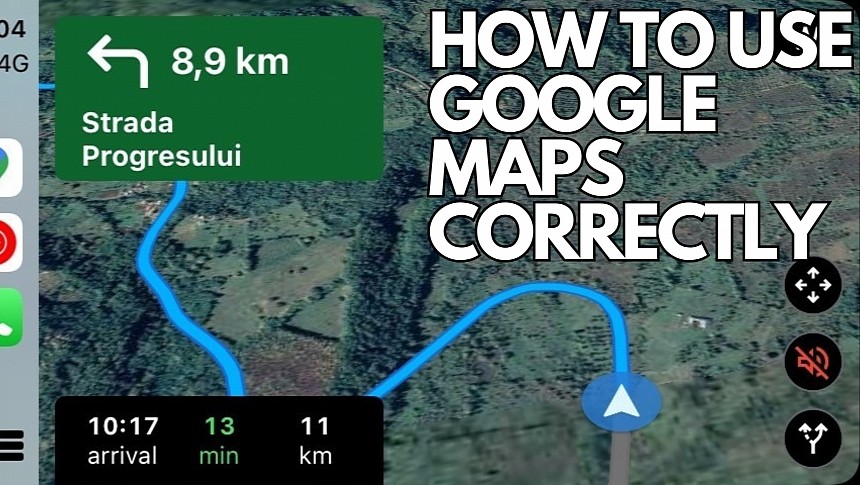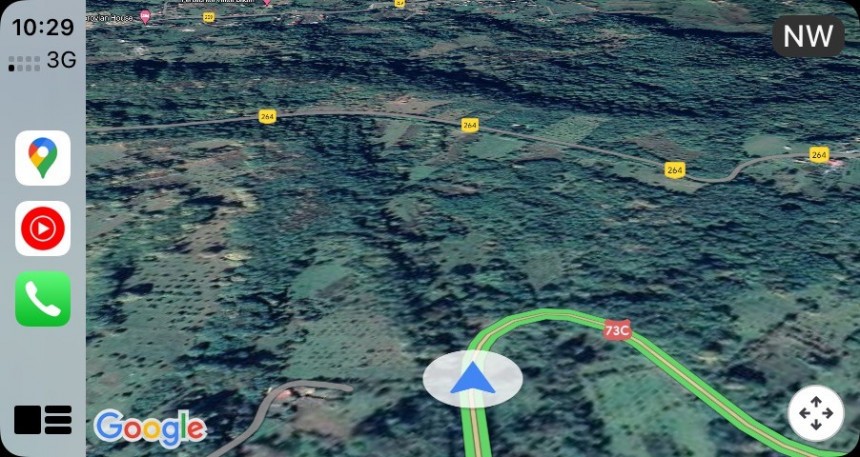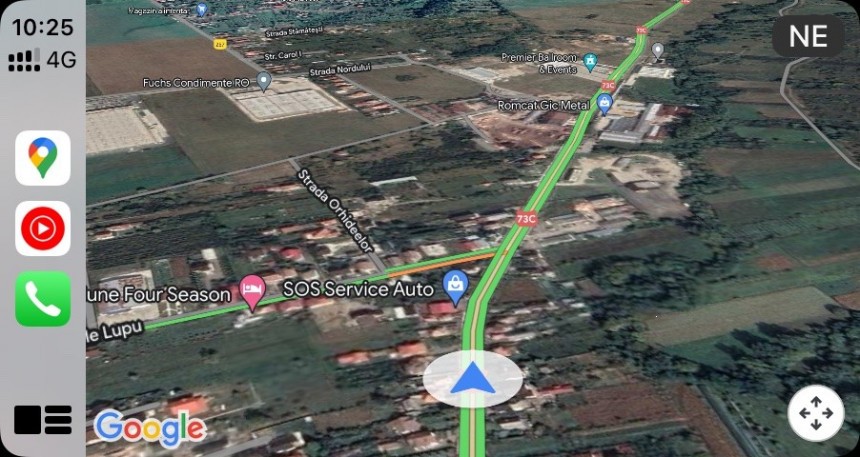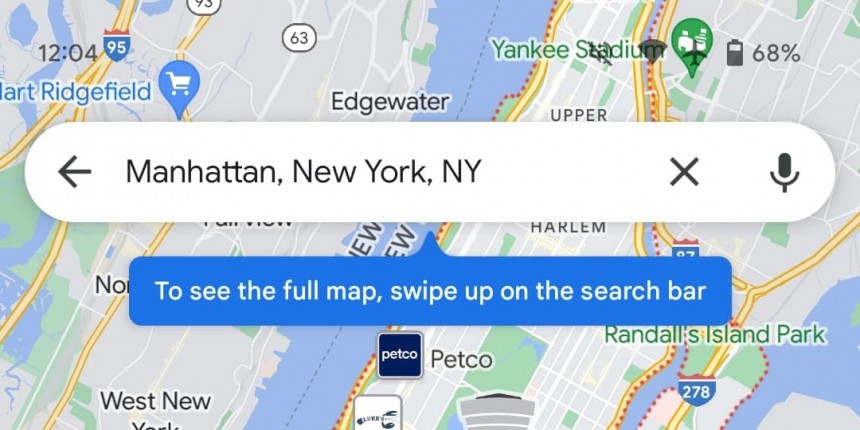Google Maps, Waze, and Apple Maps have become integral to the driving experience for most modern drivers. They help find faster routes to a destination and avoid slowdowns caused by traffic jams, accidents, and speed traps.
However, people misuse these apps in horrible ways, sometimes ignoring road signage and causing major traffic disruptions.
As a result, drivers make these apps rather redundant, forcing authorities to turn to desperate attempts to prevent blunders and incidents.
Here's everything you need to know about the long-distance fight fueled mostly by drivers who don't know how to properly use a navigation app.
All these navigation apps offer guidance to defined destinations without knowing if their directions are 100 percent accurate. The tiniest change on the road, be it a closed road, a detour caused by accidents, or the police diverting traffic to another route because of various incidents, could cause navigation apps to suggest routes, sending you to the middle of nowhere.
In some cases, navigation apps also suggest bad routes in an attempt to find faster routes, eventually suggesting unpaved roads or shortcuts going through small, narrow roads.
It's why users trusting these applications blindly end up in the most awkward situations. Not long ago, an Amazon lorry driver got the vehicle stuck on a narrow road specifically because they ignored the road signs and followed the sat-nav directions.
Unfortunately, some of these incidents ended tragically. Earlier this month, the driver of a car carrying five followed Google Maps to the destination while driving in heavy rain. They took a wrong turn, and due to the bad weather conditions, they couldn't see what was happening in front of the car. The vehicle plunged into a river, with two passengers drowning.
In 2020, two Russians followed the turn-by-turn guidance to find a faster route. The navigation app took them off the highway and suggested an alternate route that used a road already closed due to snow. Their car broke down in an area without cellular reception, and after several nights of struggling with the brutally cold weather, the driver froze to death. The passenger was eventually found alive by emergency teams.
The disruptions caused by drivers blindly trusting navigation apps, very often in small communities used by the likes of Waze to avoid heavy traffic, have forced authorities to take unprecedented measures.
Authorities in several regions erected street signs telling drivers to ignore their sat-nav solutions and pay attention to road signage. Such measures would only work assuming the drivers see them, but local officials hope at least one of the vehicle occupants would observe the signs when looking for clues on the route.
The accident leading to the death of two people in India triggered a police response advising drivers to rely less on Google Maps and other navigation apps.
Law enforcement emphasizes that all these solutions can easily suggest a broken route, eventually causing major risks for the driver and the other vehicle occupants. Police explained that drivers should always pay attention to the road signs and prioritize them over navigation apps.
Authorities' struggle to convince drivers to rely less on navigation apps stems from the horrible misuse of this software.
It's all drivers' fault, no matter if we like it or not, and people putting all their faith into what Google Maps, Waze, and Apple Maps say gave authorities and police no other option than to play down the importance of navigation apps.
The Indian police are certainly right. Drivers should always (but always!) prioritize street signs over turn-by-turn navigation guidance. Due to real-time changes happening on the road, navigation apps might not be aware of updated traffic conditions and suggest routes that don't align with police indications. As a result, always following the road signage is the right approach.
While I agree that the street signs are sometimes missing, drivers simply don't pay enough attention to them, especially when traveling to unfamiliar destinations. I've seen countless drivers blaming navigation apps for terrible traffic errors, from running a red light to going in the wrong direction on the highway. The road signage was there, but the drivers just didn't see it.
The correct way of using navigation apps starts with always inspecting the suggested route before starting to drive. The method lets drivers get familiar with the route in advance, so you can anticipate some turns.
You should also ignore routes that include any road looking dangerous, such as unpaved streets, narrow pathways, or any section of the road with street signs warning of potential dangers. Beginner drivers should also avoid the small residential streets, as driving on a road with vehicles parked on both sides could be challenging.
Eventually, drivers should only use navigation for suggestions. If something doesn't look right, don't follow the route. The driver is responsible for everything, and the best way to arrive at the destination safely is by keeping an eye on road signs every second they're behind the wheel.
As a result, drivers make these apps rather redundant, forcing authorities to turn to desperate attempts to prevent blunders and incidents.
Here's everything you need to know about the long-distance fight fueled mostly by drivers who don't know how to properly use a navigation app.
The incidents
In some cases, navigation apps also suggest bad routes in an attempt to find faster routes, eventually suggesting unpaved roads or shortcuts going through small, narrow roads.
It's why users trusting these applications blindly end up in the most awkward situations. Not long ago, an Amazon lorry driver got the vehicle stuck on a narrow road specifically because they ignored the road signs and followed the sat-nav directions.
Unfortunately, some of these incidents ended tragically. Earlier this month, the driver of a car carrying five followed Google Maps to the destination while driving in heavy rain. They took a wrong turn, and due to the bad weather conditions, they couldn't see what was happening in front of the car. The vehicle plunged into a river, with two passengers drowning.
In 2020, two Russians followed the turn-by-turn guidance to find a faster route. The navigation app took them off the highway and suggested an alternate route that used a road already closed due to snow. Their car broke down in an area without cellular reception, and after several nights of struggling with the brutally cold weather, the driver froze to death. The passenger was eventually found alive by emergency teams.
The response
Authorities in several regions erected street signs telling drivers to ignore their sat-nav solutions and pay attention to road signage. Such measures would only work assuming the drivers see them, but local officials hope at least one of the vehicle occupants would observe the signs when looking for clues on the route.
The accident leading to the death of two people in India triggered a police response advising drivers to rely less on Google Maps and other navigation apps.
Law enforcement emphasizes that all these solutions can easily suggest a broken route, eventually causing major risks for the driver and the other vehicle occupants. Police explained that drivers should always pay attention to the road signs and prioritize them over navigation apps.
The right way to use navigation apps
It's all drivers' fault, no matter if we like it or not, and people putting all their faith into what Google Maps, Waze, and Apple Maps say gave authorities and police no other option than to play down the importance of navigation apps.
The Indian police are certainly right. Drivers should always (but always!) prioritize street signs over turn-by-turn navigation guidance. Due to real-time changes happening on the road, navigation apps might not be aware of updated traffic conditions and suggest routes that don't align with police indications. As a result, always following the road signage is the right approach.
While I agree that the street signs are sometimes missing, drivers simply don't pay enough attention to them, especially when traveling to unfamiliar destinations. I've seen countless drivers blaming navigation apps for terrible traffic errors, from running a red light to going in the wrong direction on the highway. The road signage was there, but the drivers just didn't see it.
The correct way of using navigation apps starts with always inspecting the suggested route before starting to drive. The method lets drivers get familiar with the route in advance, so you can anticipate some turns.
You should also ignore routes that include any road looking dangerous, such as unpaved streets, narrow pathways, or any section of the road with street signs warning of potential dangers. Beginner drivers should also avoid the small residential streets, as driving on a road with vehicles parked on both sides could be challenging.
Eventually, drivers should only use navigation for suggestions. If something doesn't look right, don't follow the route. The driver is responsible for everything, and the best way to arrive at the destination safely is by keeping an eye on road signs every second they're behind the wheel.















